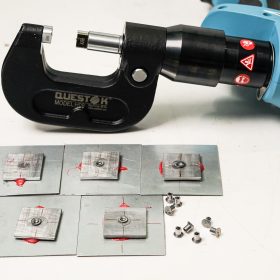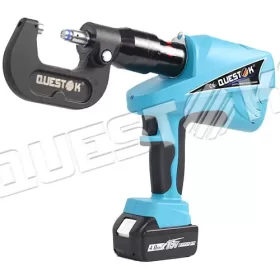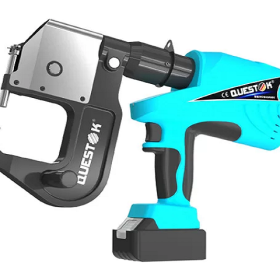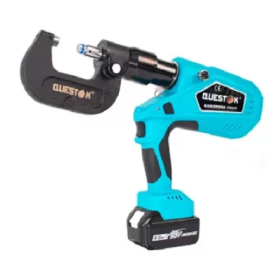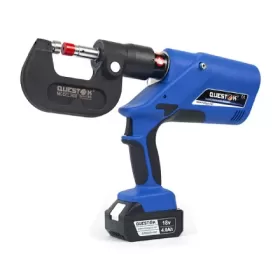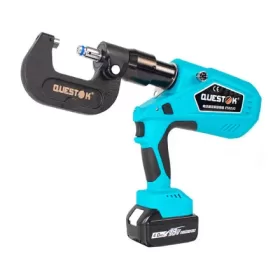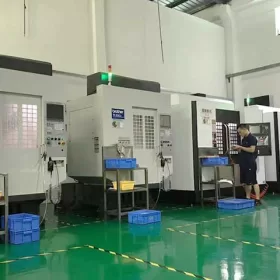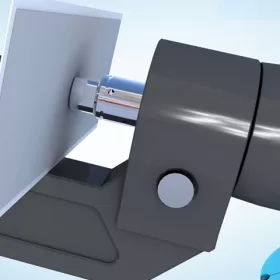A Beginner’s Guide to Sheet Metal Clinching- Mastering the Technique
Sheet metal clinching is an innovative joining technique that has gained significant prominence in the metal fabrication industry. The process involves mechanically interlinking two or more sheet metal pieces without the need for additional fasteners or adhesives. A Beginner’s Guide to Sheet Metal Clinching: Mastering the Technique provides a comprehensive guide to this versatile technique, empowering beginners and experienced fabricators alike.
An Introduction to Sheet Metal Clinching
Sheet metal clinching is a cold-forming process where interlocking dimples are created in the sheets to establish a secure and robust joint. Unlike traditional methods like welding or riveting, clinching does not produce heat, minimizing the risk of material damage or distortion. This makes it particularly suitable for thin and delicate sheet metals. The resulting joints are characterized by high strength, durability, and corrosion resistance.
Benefits of Sheet Metal Clinching
Reduced Material Consumption: Clinching eliminates the need for additional fasteners or adhesives, saving material costs.
Increased Joint Strength: Interlocking dimples create a mechanically strong joint that can withstand high loads and vibrations.
Improved Corrosion Resistance: The absence of holes or joints prevents moisture and contaminants from penetrating, enhancing corrosion resistance.
Low Heat Generation: The cold-forming process minimizes heat generation, preventing material damage and distortion.
Increased Production Efficiency: Automated clinching machines streamline the joining process, reducing labor costs and improving productivity.
Equipment and Tools
The primary tool for sheet metal clinching is a specially designed clinching machine. These machines typically feature a punch and a die that create the interlocking dimples. The necessary equipment also includes a clinching tool and a press to apply the required force. Proper tool selection is crucial to ensure optimal joint quality.
Material Considerations
Not all sheet metals are suitable for clinching. The material’s thickness, strength, and ductility are critical factors. Thin, ductile materials like aluminum, copper, and mild steel are ideal for clinching. Hardened or brittle materials may not produce satisfactory joints.
Design Considerations
Proper joint design is essential for effective sheet metal clinching. Factors to consider include the thickness of the materials, the joint configuration, and the spacing between dimples. The location and number of dimples should be optimized to ensure adequate joint strength.
Safety and Quality Control
Safety should be the top priority during sheet metal clinching operations. Proper training, protective gear, and machine guarding are essential. Regular quality control measures, such as joint strength testing and visual inspections, ensure the reliability and integrity of the joints.
- Company News
- Industry News
- Tag
- Tags
-
The Advantages of Questok Rivet Guns: Precision, Efficiency, and Durability
In industrial fastening applications, the choice of tools directly impacts productivity, safety, and long-term cost-effectiveness. Questok rivet guns have emerged as a standout solution for professionals across aerospace, automotive, and construction sectors. Combining advanced engineering with user-centric design, these tools deliver unmatched performance. Below are the key advantages that make Questok rivet guns a preferred choice:
-
Rivet Gun FAQ
Rivet Gun FAQ-SPR
-
Fast Assembly and Repair With Cordless Solid Rivet Gun
Questok cordless solid rivet gun stands out as a pivotal innovation, merging portability with power to facilitate efficient and effective fastening in a myriad of applications.
-
Redifine The Role of Self-piercing Riveting Gun Machine
Self-piercing riveting adopts high-speed mechanical fastening skill that joins thin sheet materials, typically steel and aluminum alloys.
-
The Latest Innovations in Clinching Tool Design
Explore the latest innovations in clinching tool design, redefining precision, efficiency, and versatility in material joining.
-
The Application and Maintenance of Self-Piercing Rivet Guns
Delve into the applications of self-piercing rivet guns in the automotive and aerospace industries and reveal the essential maintenance practices that ensure their accuracy and efficiency.
-
Rivetless Riveting Gun for Ventilation Duct Projects
The ventilation duct rivetless gun is a tool for riveting ventilation ducts without rivets.
-
Guide to Using Self-Piercing SPR Riveting Gun
In the automotive industry, self-piercing SPR (Self-Piercing Rivet) riveting guns are commonly used for joining metal components in vehicle bodies, including BMW vehicles.
-
Rivet Gun FAQ
Rivet Gun FAQ-SPR
-
Versatile Fastening- Applications of the Handheld Rivet Gun Across Industries
In the realm of fastening, the handheld rivet gun stands as a testament to ingenuity and versatility. Its ability to effortlessly join materials with sheer strength and permanence has revolutionized manufacturing and construction processes, leaving an enduring mark on diverse industries. Aerospace: Where precision and reliability are paramount, the rivet gun shines. In aircraft assembly, […]
-
Time-Saving Tools- Speeding Up Projects with Electric Blind Rivet Guns
In the whirlwind of project deadlines, every minute counts. But what if there was a tool that could dramatically reduce assembly time, giving you an edge in the race against the clock? Enter the electric blind rivet gun: your secret weapon for lightning-fast and effortless riveting. Electric blind rivet guns are the ultimate time-savers for […]
-
Streamlining Fastening- How an Electric Blind Rivet Gun Enhances Efficiency
Introduction In the realm of manufacturing and assembly, fastening plays a crucial role in securing components and ensuring structural integrity. Traditional manual rivet guns, while reliable, are often time-consuming and labor-intensive. The advent of electric blind rivet guns has revolutionized the fastening process, significantly enhancing efficiency and productivity. This article delves into the benefits of […]
-
The Role of Automation in Electric Rivetless Clinching
Electric rivetless clinching (ERC) is a lightweight joining process that eliminates the need for rivets or other fasteners. This can lead to significant cost savings and increased production efficiency. Automation plays a critical role in ERC, enabling high-speed and high-volume production. Automated Feed Systems Automated feed systems are used to accurately position the two workpieces […]
-
Why Choose a Universal Self-Piercing Riveting Gun for Your Projects?
In the realm of construction and fabrication, riveting guns stand as indispensable tools for creating secure and robust connections. Among the various types available, universal self-piercing riveting (SPR) guns have emerged as a game-changer due to their versatility and efficiency. This article will delve into the compelling reasons why choosing a universal self-piercing riveting gun […]
-
Why Choose Stainless Steel Hollow Rivets for Your Projects?
In the world of industrial manufacturing, choosing the right fasteners for your projects is crucial for ensuring longevity and reliability. Among the many options available, stainless steel hollow rivets stand out as a superior choice for a wide range of applications. This article delves into the compelling reasons why stainless steel hollow rivets are the […]
-
Top Trends in Electric Rivetless Clinching Guns
In the realm of fastening technology, electric rivetless clinching guns have emerged as a revolutionary solution for a wide range of industrial applications. These advanced tools offer several преимущества and capabilities, revolutionizing the way businesses approach their fastening needs. Adoption of Brushless Motors Brushless motors have gained significant traction in electric rivetless clinching guns due […]
